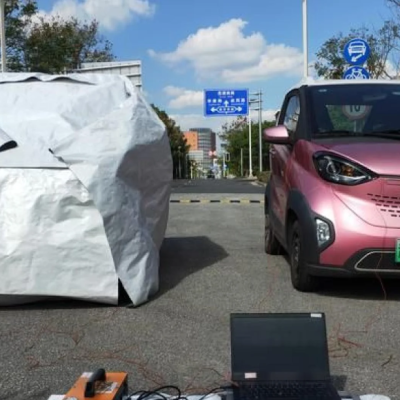Electric cars are involved in accidents with damage to their own vehicles much more frequently than cars with combustion engines, according to Swiss insurance company Axa. The so-called Overtapping effect is primarily responsible for this. Axa’s accident statistics show that electric cars are involved in collisions with damage to their own vehicles 50% more often than combustion engine cars. For electric cars with particularly high performance, accidents with damage to their own vehicles occur even twice as often. The high number of accidents is primarily caused by driving behavior, which differs significantly between high-performance electric cars and combustion engines. More than half of electric car drivers therefore require a longer adjustment period at the beginning.
The risk is particularly high during acceleration, where the Overtapping effect is underestimated by many drivers. In a crash test, Axa’s accident researchers simulated the Overtapping effect. An electric car driver in this experiment only briefly taps the accelerator or power pedal. Due to the high acceleration, he subsequently loses control of the Tesla electric car and drives much too fast towards a roundabout. Because he can no longer brake and drives over the roundabout in the middle, the car overturns and lands on its roof. The crash test also revealed that the underbody of many electric cars is a weak point due to its design. Although the expensive battery is well protected by additional stiffening of the body, these elements at the front, rear, and sides cannot prevent damage to the underbody when driving over obstacles.
Pfäffli therefore demands an additional underbody protection from the manufacturers, for example, through a titanium plate. In the simulated accident, a fire occurs due to the damaged underbody, which has also affected the battery. However, the insurance company’s accident statistics show, as data from the USA also show, that the risk of fire in electric cars is very low. The insurance company also conducted a second crash test to investigate the effect of the additional weight of the battery on a collision. A Golf VII with a combustion engine and a Golf VII with an electric motor were used for this purpose. The electric car has identical dimensions but weighs 400 kilograms more. The cars collided in the crash test at a speed of 50 km/h. The damage to the combustion engine car was significantly higher.










